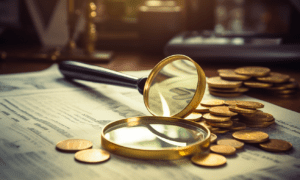It is no longer news that investing in precious metals is a wise way to diversify your investment portfolio, even as a retiree. Gone are the days when having an IRA account meant relying on traditional stock, bonds, ETFs, etc. Economic volatility can wipe out such investments within a short period. Hence, investors always look for secure ways to safeguard their hard-earned money.
However, gold is usually the go-to means of securing investments, and while it works, not everyone can afford the price of gold. Besides, the gold investment market is becoming saturated, even though there are other precious metals to consider, like silver. If you have an IRA and want to diversify your investment, you can invest in silver through that account.
Gold IRAs are popular and highly profitable. However, silver IRA accounts are also profitable because the silver market is less saturated than gold. There is no difference between a gold or precious metals IRA and a silver IRA; they function similarly. Many gold IRA companies also provide silver IRAs and other precious metals like palladium and platinum. But before investing in silver using your IRA, you must know what it means, the upsides and downsides, and factors to consider.
What Is a Silver IRA?
A silver IRA is a special individual retirement account that allows the owner to include precious metals like physical silver in their retirement portfolio. Adding physical silver to a portfolio creates another avenue to strengthen an investment, even if it already includes gold or other metals. However, the metals must meet the IRS weight and purity standards to qualify as part of an investment portfolio.
Silver IRAs are not complicated; they work the same as a traditional IRA. The only difference is in the content of the investment. A silver IRA allows the owner to invest in or add physical silver like bullion or gold to their portfolio. In other words, where a traditional IRA invests in mutual funds, stocks, bonds, and ETFs, a silver one invests in physical silver without necessarily excluding the investment options in a traditional IRA.
A precious metal IRA is usually self-directed, so the investor will determine which IRA investments the account will hold. Still, there will be a custodian who will hold and manage the physical silver in a depository. Your primary job is to deposit money into the account, which will be used to buy more silver for the portfolio, and the account’s value is determined by the type of precious metal held in it.
The IRS has some regulations for holding a silver IRA. As mentioned, the metal must meet a purity standard, which is 99.9%. The type of physical silver you invest in will determine the weight standard by the IRS. For example, if you invest in rounds, the weight options include 1, ½, ¼, and 1/10 ounce. You must also meet the yearly contribution limit for approval for such an account.
Working with a credible and reliable silver IRA company is crucial. It should help you adhere to the regulations and avoid companies who use fear to pressure investors into working with them.
You must attain a certain age before qualifying to withdraw from a silver IRA. From the age of 59 ½, you can freely withdraw from the account without incurring penalties. From the age of 73, the requirement is that you will have a minimum withdrawal limit for the account. The good news is that you can liquidate the account or get the physical silver now.
Benefits of Silver IRAs
The following are some benefits of investing in a silver individual retirement account, especially in an unstable economy.
-
Retains Value
Silver retains its value even in economic instability and downturns. Because it is a precious metal, it usually is in demand, although the demand is typically lower than that of gold. Nevertheless, you will also find a market for silver, especially if you have it in physical coins or bars. Therefore, with silver as part of your investment portfolio, you can safeguard against inflation and market volatility.
However, the silver market is not as big and profitable as gold. It is also not as liquid, meaning that there are usually not many people as willing to buy silver as they are to buy gold. Consequently, the silver market is typically more volatile than the gold market because of the lower trading volume.
Also, the prices may fluctuate more than gold because of the lower trading interest. Still, silver is an excellent addition to an investment portfolio, better than relying on traditional stocks and bonds that can quickly lose value.
2. Tax Benefits
Tax on silver IRAs works the same as traditional IRAs. You can defer the taxes to your earnings and contributions until you retire. That means you can wait to pay taxes on what you earn and contribute to the account until you withdraw from it, usually after retirement.
Also, the contributions to the account can be tax-deductible. This means the amount you contribute to the account lowers your taxable income. Consult a tax professional to help you understand the tax intricacies before committing to such an account. Click here to learn more about IRAs and how they work.
Important Considerations
While a silver IRA sounds beneficial, a few considerations should be made before committing. Remember how volatile the market can be; prices can dramatically fluctuate, and the market does not thrive like gold. Therefore, a long-term investment strategy should be developed that includes preparation for price fluctuations.
Furthermore, research the available silver IRA services and custodians to determine which works best. Consider the fees, investment requirements, insurance, and storage of the physical metal. It helps to have more than one option so you can carefully evaluate them side by side to make an informed decision.
Conclusion
Silver IRAs are a profitable way to diversify an investment portfolio. They work the same as gold IRAs, with the only difference being the precious metal involved. Understanding the market gives you an advantage because you can invest in various precious metals while maintaining stocks and bonds. That way, you can secure your assets in an unstable economy and volatile market and comfortably plan for your future.





































